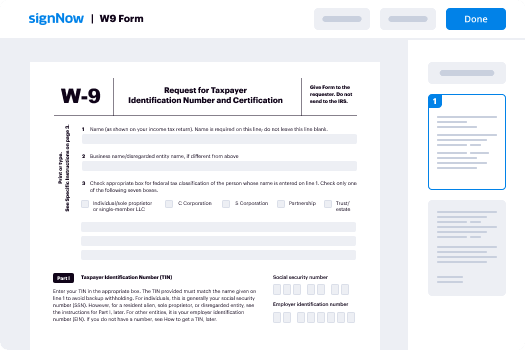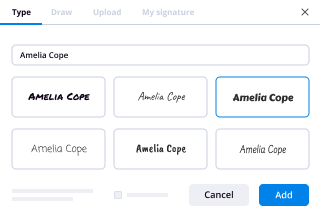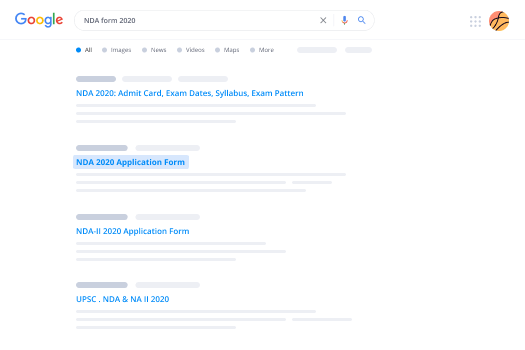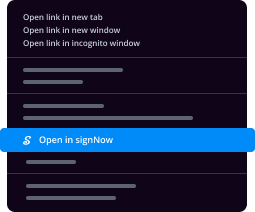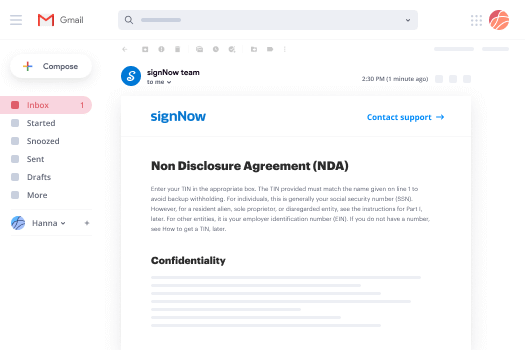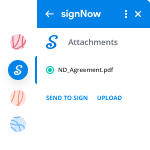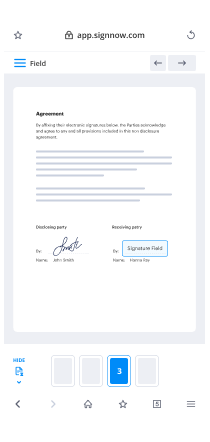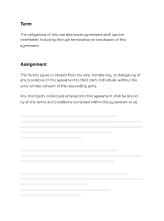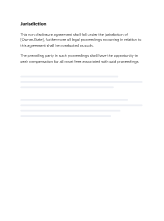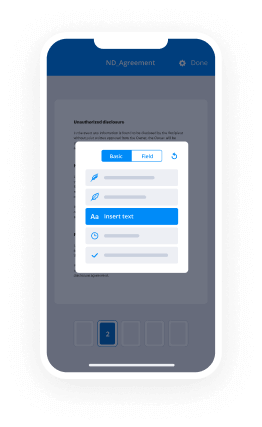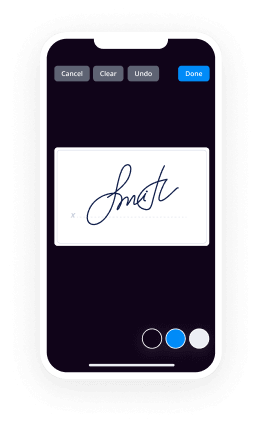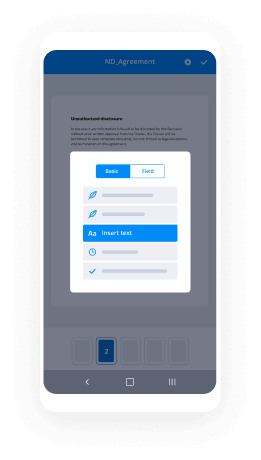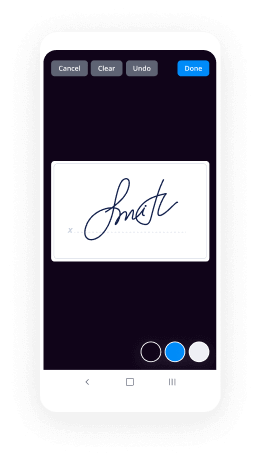Explora Las Características Populares De eSignature: Cómo Crear Un Archivo De Firma
- Rápido para iniciar
- Fácil de usar
- Soporte 24/7
Las empresas con visión de futuro de todo el mundo confían en SignNow






Guía rápida sobre cómo crear un archivo de firma
La solución de firma electrónica airSlate SignNow está lista para reemplazar tu autógrafo manuscrito y mejorar prácticamente cualquier procedimiento manual basado en papel. Firmar formularios electrónicamente ayuda a ahorrar tiempo, reduce gastos y te ofrece la agilidad para aprobar acuerdos y formularios comerciales desde cualquier lugar y en cualquier momento, en cualquier dispositivo. Sigue leyendo para aprender cómo puedes comenzar a mejorar tus flujos de trabajo de aprobación y firmar y enviar documentos para firma electrónicamente.
Completa los siguientes pasos que se enumeran a continuación para entender cómo crear un archivo de firma:
- Abre tu navegador y visita signnow.com.
- Únete a una prueba gratuita o inicia sesión utilizando tu correo electrónico o credenciales de Google/Facebook.
- Haz clic en Avatar de Usuario -> Mi Cuenta en la esquina superior derecha de la página.
- Personaliza tu Perfil de Usuario con tu información personal y ajustando configuraciones.
- Diseña y gestiona tu(s) Firma(s) Predeterminada(s).
- Regresa a la página del panel de control.
- Pasa el cursor sobre el botón Subir y Crear y selecciona la opción adecuada.
- Haz clic en la opción Preparar y Enviar junto al nombre del documento.
- Ingresa el nombre y la dirección de correo electrónico de todos los firmantes en la pantalla emergente que se abre.
- Utiliza el menú Comenzar a agregar campos para proceder a modificar el archivo y firmarlo tú mismo.
- Haz clic en GUARDAR E INVITAR cuando hayas terminado.
- Continúa afinando tu flujo de trabajo de firma electrónica utilizando funciones avanzadas.
No podría ser más fácil descubrir cómo crear un archivo de firma que con airSlate SignNow. Registra tu perfil, modifica y firma plantillas, solicita firmas y rastrea cada acción realizada en tus documentos.
Cómo funciona
Califica tu experiencia
What is the how to create a signature file
The document titled "how to create a signature file" serves as a formal representation of an individual's or organization's intent to sign electronic documents. It typically includes essential information such as the signer's name, title, and contact details. This file is crucial in establishing the authenticity of electronic signatures and ensuring that the signing process complies with legal standards.
Steps to complete the how to create a signature file
Creating a signature file involves several straightforward steps. First, users need to gather their personal information, including name, title, and any relevant contact details. Next, they can access airSlate SignNow to create their signature file. This typically involves:
- Logging into their airSlate SignNow account.
- Navigating to the signature creation section.
- Inputting the necessary information into the designated fields.
- Choosing a preferred signature style or uploading a handwritten signature.
- Saving the completed signature file for future use.
Once created, users can easily apply this signature to various documents requiring their approval.
How to use the how to create a signature file
Once the signature file is created, it can be used seamlessly within airSlate SignNow. To utilize the signature file, users can select it when sending documents for signature. This process involves:
- Uploading the document that requires a signature.
- Choosing the appropriate recipient for the signature request.
- Selecting the signature file from the saved options.
- Sending the document for signature.
This integration ensures that the signing process is efficient and secure, allowing users to manage their documents electronically with ease.
Legal use of the how to create a signature file
The legal validity of a signature file is governed by the Electronic Signatures in Global and National Commerce (ESIGN) Act and the Uniform Electronic Transactions Act (UETA) in the United States. These laws affirm that electronic signatures carry the same weight as traditional handwritten signatures, provided that both parties consent to use electronic methods. Users should ensure that their signature file complies with these regulations to maintain its legal standing.
Security & Compliance Guidelines
When creating and using a signature file, it is essential to adhere to security and compliance guidelines. Users should consider the following:
- Utilizing strong passwords for their airSlate SignNow accounts.
- Enabling two-factor authentication for added security.
- Regularly updating their signature file to reflect any changes in personal information.
- Ensuring that all documents are shared securely through encrypted channels.
By following these guidelines, users can protect their signature files and maintain compliance with legal standards.
Examples of using the how to create a signature file
Signature files can be used in various scenarios, enhancing the efficiency of document management. Common examples include:
- Signing contracts and agreements in real estate transactions.
- Authorizing financial documents, such as loan applications.
- Finalizing HR documents, including employment contracts and policy acknowledgments.
- Approving legal documents, such as non-disclosure agreements.
These examples illustrate the versatility of signature files in facilitating electronic workflows across different industries.
¡Obtenga ahora firmas vinculantes desde el punto de vista jurídico!
-
Mejor ROI. Nuestros clientes logran un promedio de 7x ROI en los primeros seis meses.
-
Se adapta a sus casos de uso. De las PYMES al mercado medio, airSlate SignNow ofrece resultados para empresas de todos los tamaños.
-
Interfaz de usuario intuitiva y API. Firma y envía documentos desde tus aplicaciones en minutos.
Firma en línea FAQs
-
What is the process to create a signature file using airSlate SignNow?
To create a signature file with airSlate SignNow, simply log in to your account, navigate to the signature section, and follow the prompts to draw, type, or upload your signature. This user-friendly process ensures that you can quickly create a signature file that meets your needs. -
Are there any costs associated with creating a signature file?
Creating a signature file with airSlate SignNow is included in our subscription plans, which are designed to be cost-effective for businesses of all sizes. You can choose from various pricing tiers that best suit your needs, ensuring you get the most value while learning how to create a signature file. -
What features does airSlate SignNow offer for signature files?
airSlate SignNow offers a range of features for signature files, including customizable templates, secure storage, and the ability to sign documents from any device. These features enhance your experience and streamline the process of how to create a signature file. -
Can I integrate airSlate SignNow with other applications?
Yes, airSlate SignNow seamlessly integrates with various applications such as Google Drive, Salesforce, and Microsoft Office. This integration allows you to enhance your workflow and simplifies how to create a signature file within your existing systems. -
What are the benefits of using airSlate SignNow for signature files?
Using airSlate SignNow for your signature files provides numerous benefits, including increased efficiency, reduced paper usage, and enhanced security. By learning how to create a signature file with our platform, you can streamline your document signing process and improve overall productivity. -
Is it easy to share my signature file with others?
Absolutely! airSlate SignNow makes it easy to share your signature file with others via email or direct links. This feature simplifies collaboration and ensures that everyone involved can access the necessary documents quickly while you learn how to create a signature file. -
Can I edit my signature file after creating it?
Yes, you can easily edit your signature file after creating it in airSlate SignNow. Whether you want to change the style or update the design, our platform allows you to make adjustments effortlessly, ensuring you always have the perfect signature file.




















